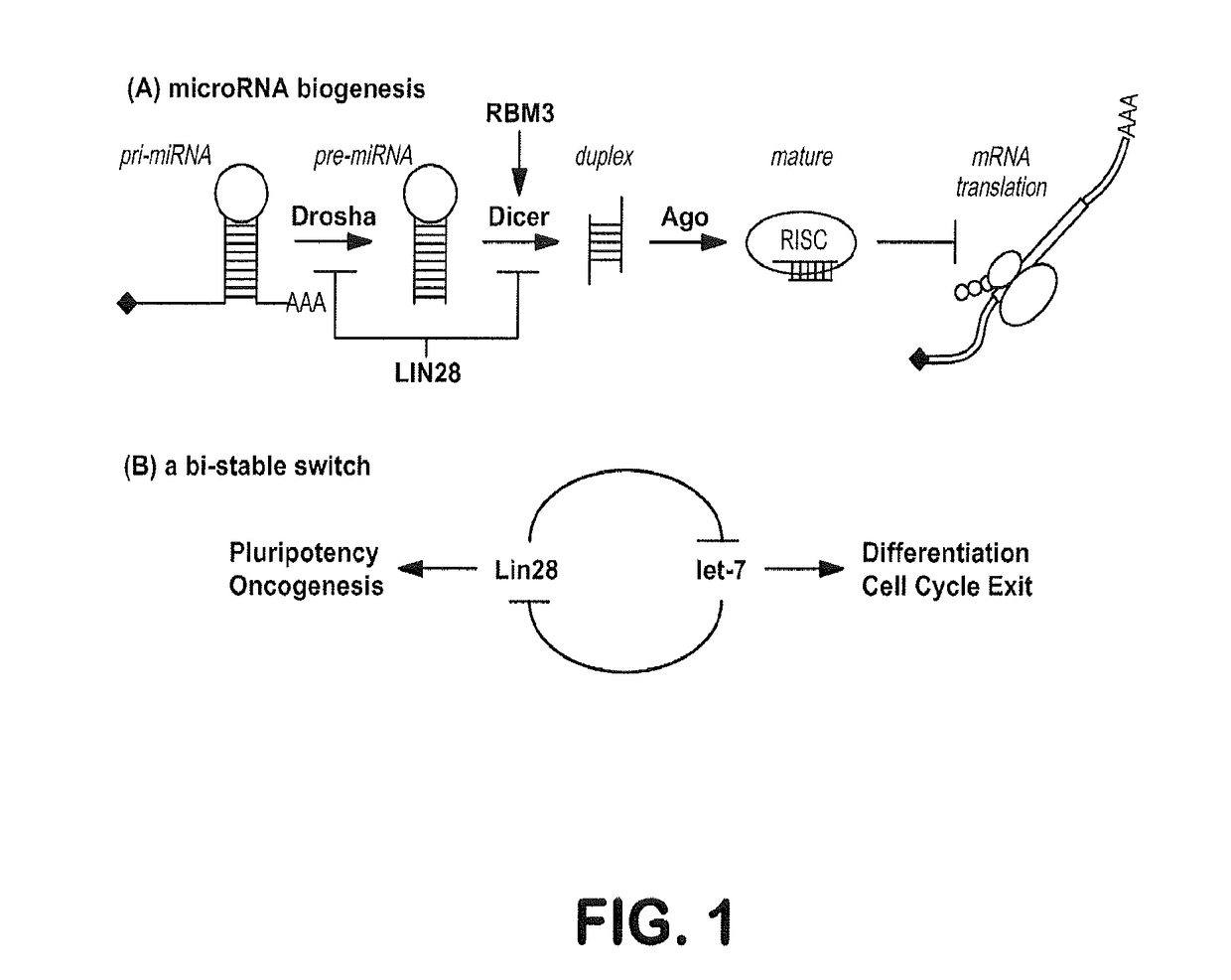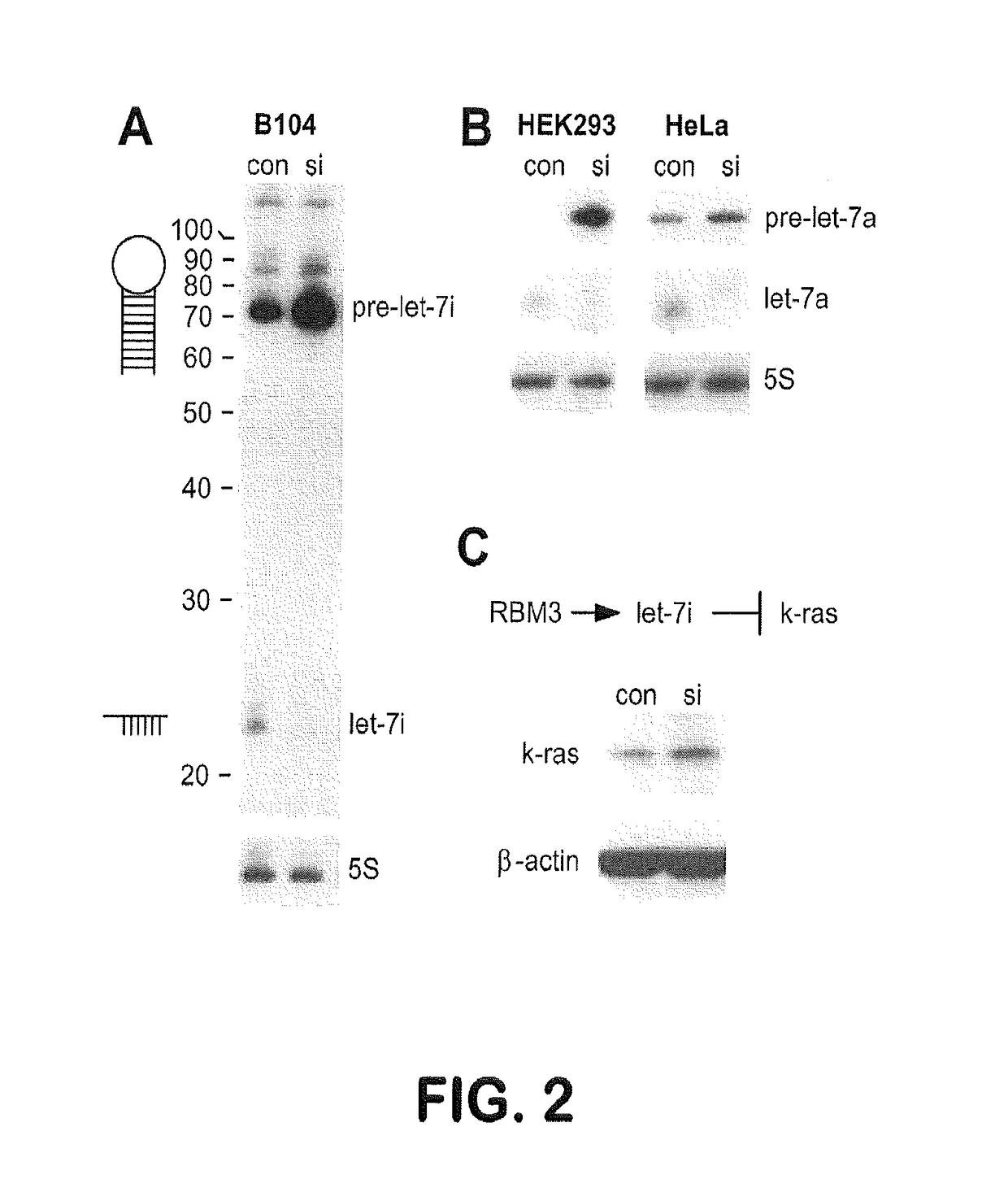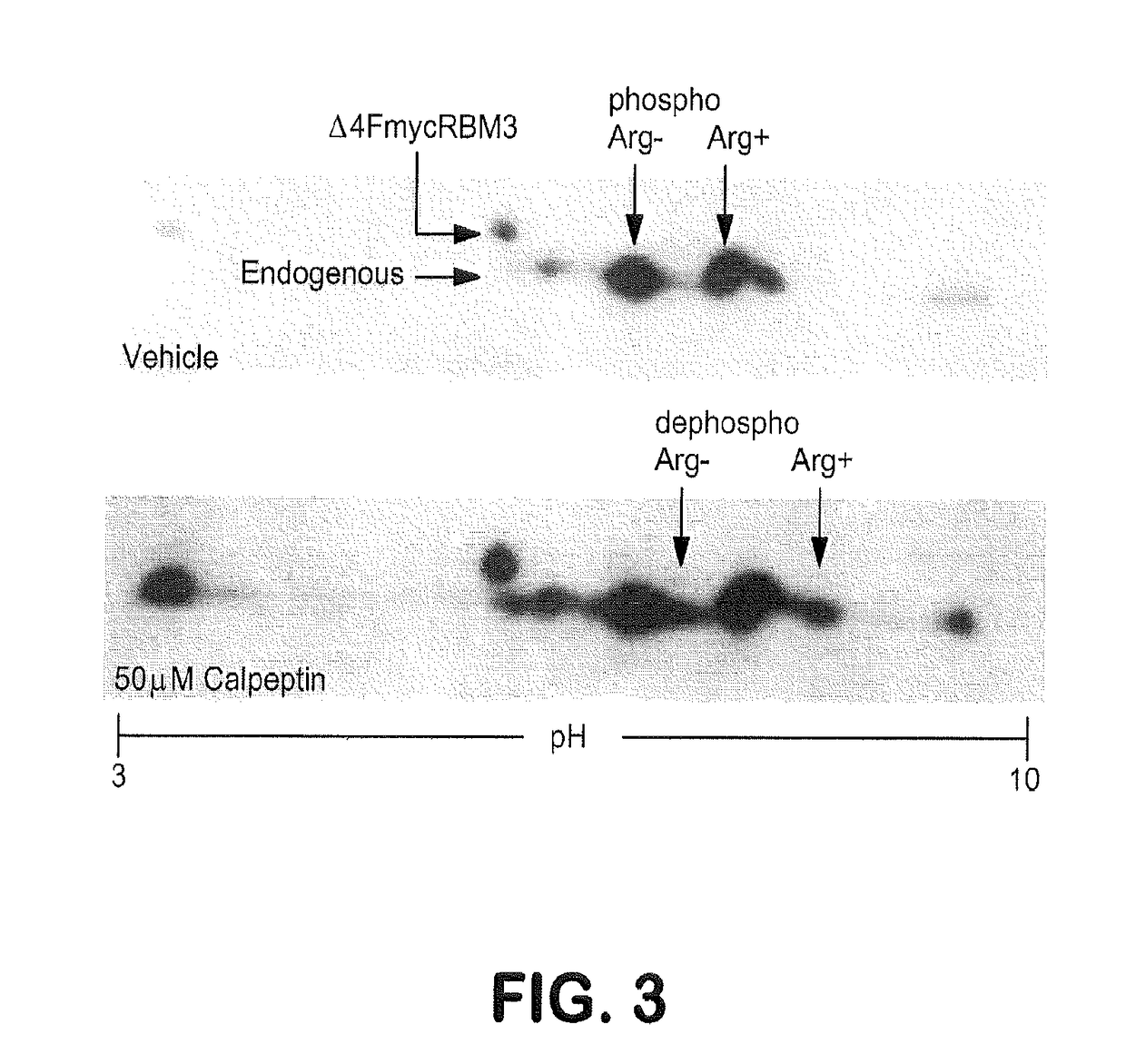Methods for modulating cancer cells and stem cells
a cancer cell and stem cell technology, applied in the field of cancer cell and stem cell modulation, can solve the problems of lack of cscs activity and and the recurrence of tumors after curative surgery remains a major obstacle to improving overall cancer survival
- Summary
- Abstract
- Description
- Claims
- Application Information
AI Technical Summary
Benefits of technology
Problems solved by technology
Method used
Image
Examples
example 1
n of Let-7 Family miRNA Biogenesis by RBM3
[0067]RNA-binding motif protein 3 (RBM3) promotes miRNA biogenesis at the Dicer step by binding to pre-miRNAs and derepressing their access to Dicer. It has been shown that RBM3 strongly promotes the biogenesis of all members of the let-7 family, as well as 3 other miRNAs that, like let-7, downregulate LIN28 (i.e., miRs 9, 30, 125). In all cancer cell lines tested so far, let-7 biogenesis is abolished in the absence of RBM3 and promoted by RBM3 overexpression—i.e. let-7 production shows a strong dependence on RBM3. As shown in FIG. 2, we observed a profound effect of RBM3 knockdown on let-7 processing and let-7 target expression. Taken with the fact that RBM3 is highly expressed in proliferating and differentiating cell fields of mouse brain, this finding prompted us to study RBM3's role in differentiation. Importantly, we found that manipulation of RBM3 levels in the P19 embryonal carcinoma cell line and in mouse ESCs regulates LIN28 expres...
example 2
gulation of RBM3
[0068]Phosphorylation of RBM3 on tyrosines proximal to the C-terminus has been identified in hundreds of phosphoproteomic screens of solid tumors, hematopoietic malignancies, and cancer cell lines (www.phosphosite.org). Our mutational analyses of 4 C-terminal tyrosines confirmed that these residues are phosphorylated. We have found that a dephosphorylated form of RBM3 preferentially associates with pre-miRNAs (data not shown), suggesting that it is this form that promotes miRNA biogenesis. Interestingly, a single non-phosphorylatable mutant, Y146F, induced dephosphorylation of endogenous RBM3 in the B104 cell line, presumably by competing for its endogenous kinase. Bioinformatic analysis predicted that Y146 is a strong consensus site for the Insulin Like Growth Factor I Receptor (IGF1R); indeed, the sequence surrounding Y146 is perfectly homologous to a site in PDK1 known to be phosphorylated by IGF1R. IGF1R is a receptor tyrosine kinase that is involved in the maint...
example 3
horylated Form of RBM3 is not Expressed in Pluripotent Cells
[0069]Consistent with the above study, we found that non-phosphorylatable mutants of RBM3 (compared to wild-type) are difficult to express in pluripotent P19 cells, and that both P19 cells and other cancer cell lines contain very low levels of the dephosphorylated form of endogenous RBM3. Our data raise the possibility that IGF1R inhibitors may promote let-7 formation by blocking the Tyr phosphorylation of RBM3, which would have anti-cancer effects. Thus far, clinical data on IGF1R inhibitors have been mixed (Yee et al., J. Natl. Cancer Inst. 104: 975-981, 2012). As we describe below, we believe this is due in part to a second regulatory mechanism that prevents dephosphorylated RBM3 from accumulating in pluripotent and cancerous cells.
PUM
| Property | Measurement | Unit |
|---|---|---|
| Therapeutic | aaaaa | aaaaa |
| Chemotherapeutic properties | aaaaa | aaaaa |
| Antigenicity | aaaaa | aaaaa |
Abstract
Description
Claims
Application Information
 Login to View More
Login to View More - R&D
- Intellectual Property
- Life Sciences
- Materials
- Tech Scout
- Unparalleled Data Quality
- Higher Quality Content
- 60% Fewer Hallucinations
Browse by: Latest US Patents, China's latest patents, Technical Efficacy Thesaurus, Application Domain, Technology Topic, Popular Technical Reports.
© 2025 PatSnap. All rights reserved.Legal|Privacy policy|Modern Slavery Act Transparency Statement|Sitemap|About US| Contact US: help@patsnap.com



